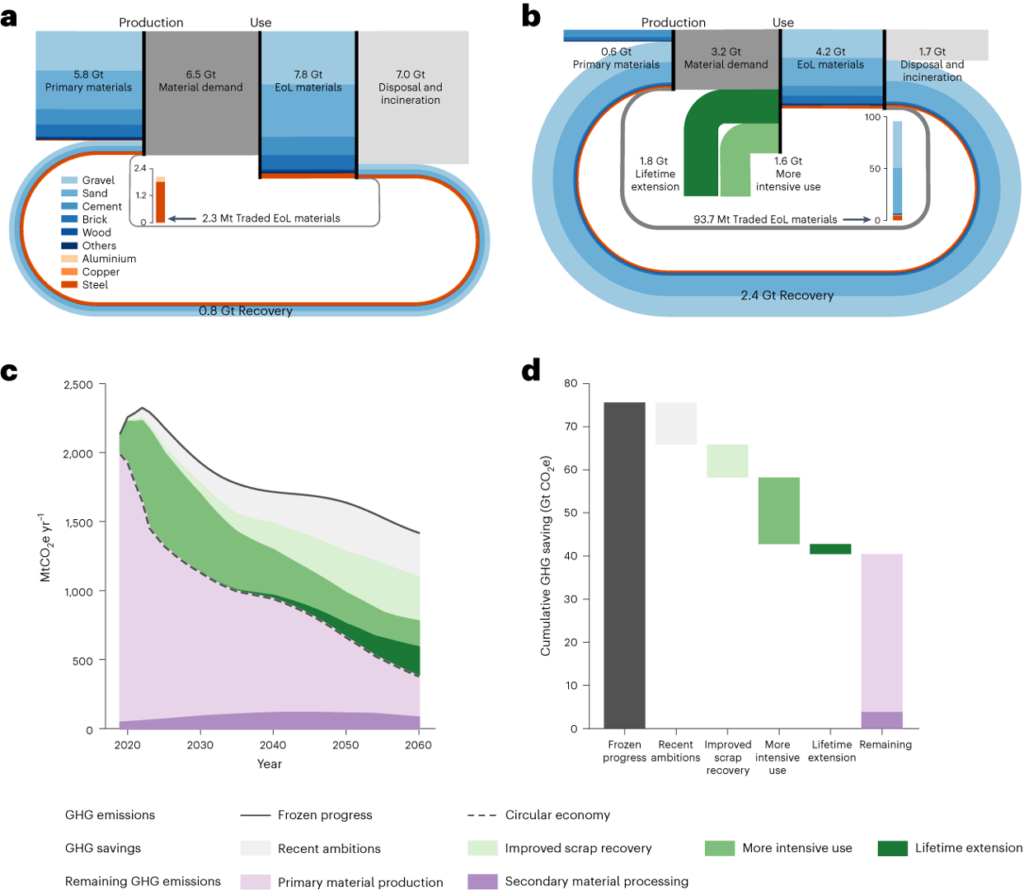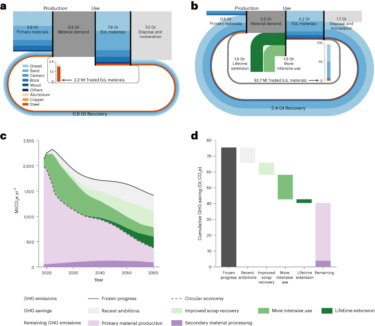
Abstract
China, as the largest global producer of bulk materials, confronts formidable challenges in mitigating greenhouse gas emissions arising from their production. Yet the emission savings resulting from circular economy strategies, such as improved scrap recovery, more intensive use and lifetime extension, remain underexplored. Here we show that, by 2060, China could source most of its required bulk materials through recycling, partially attributable to a declining population. Province-level results show that, while economic development initially drives up material demand, it also enables closed loops as demand approaches saturation levels. Between now and 2060, improved scrap recovery cumulatively reduces greenhouse gas emissions by 10%, while more intensive use, resulting in reduced material demand, reduces emissions by 21%. Lifetime extension offers a modest benefit, leading to a 3% reduction in emissions. Alongside the large potential for recycling, our findings highlight the importance of demand reduction in meeting global climate targets.
Authors
Lulu Song, Stijn van Ewijk, Eric Masanet, Takuma Watari, Fanran Meng, Jonathan Cullen, Zhi Cao, and Wei-Qiang Chen
Journal
Nature Climate Change, 13, 1135-1143, 2023, Link


